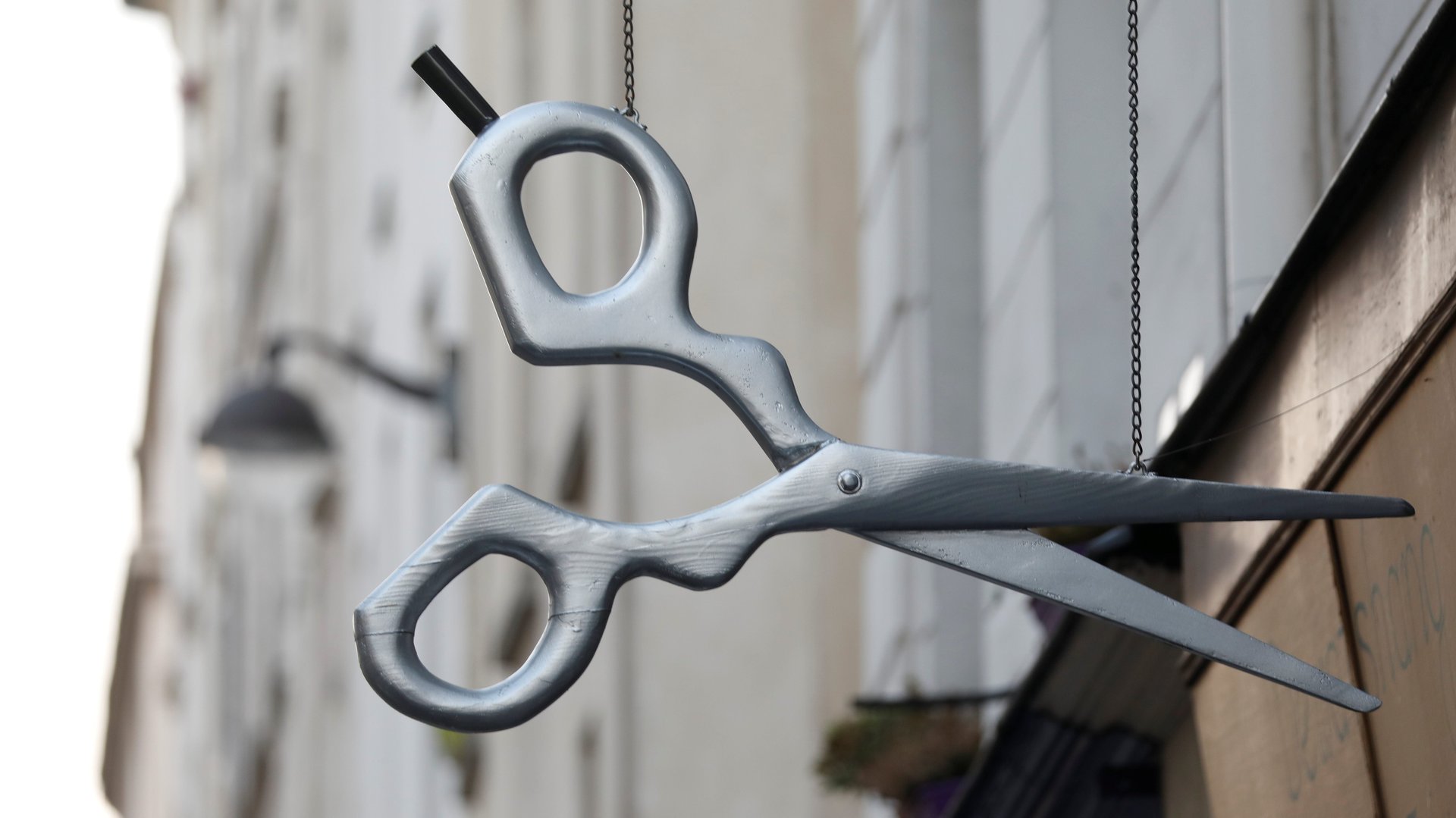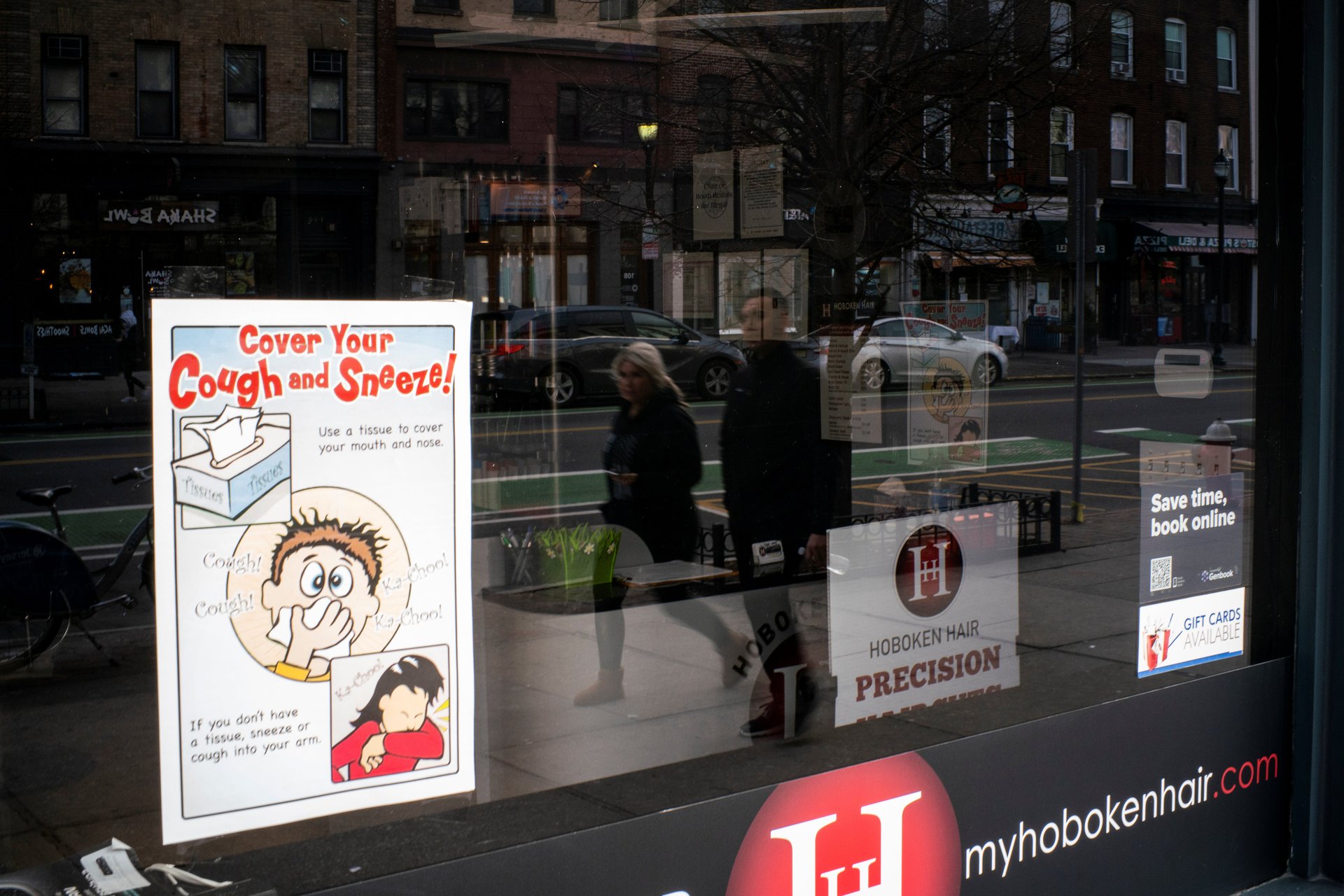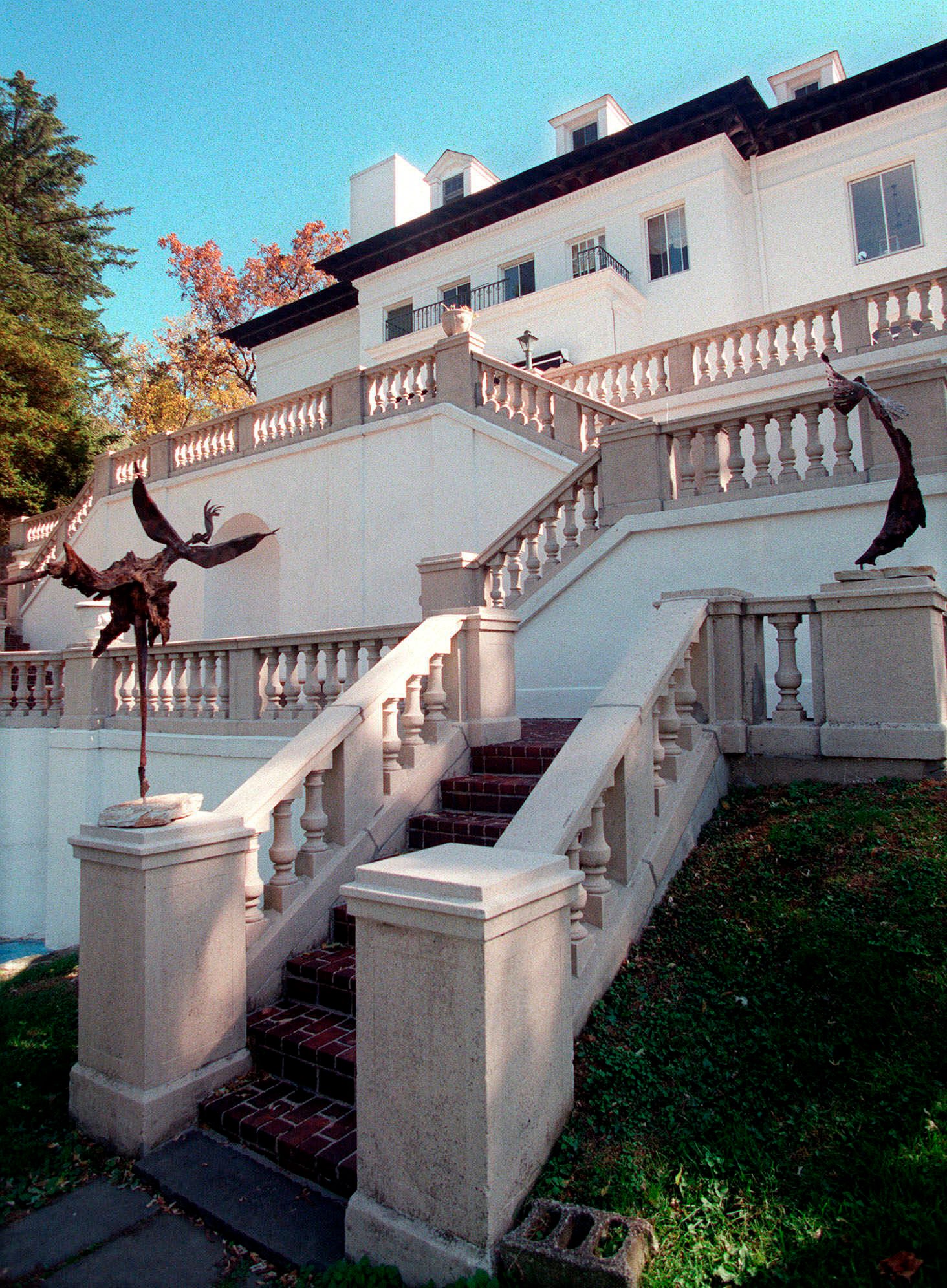We lose more than just haircuts when barbershops and salons are closed
Countless men who would visit their barber every six to eight weeks for a trim, and women who would go into the salon for routine coloring or other treatments, are feeling lost. With their barbershops and beauty shops closed due to Covid-19, they now have to manage their hair on their own.


Countless men who would visit their barber every six to eight weeks for a trim, and women who would go into the salon for routine coloring or other treatments, are feeling lost. With their barbershops and beauty shops closed due to Covid-19, they now have to manage their hair on their own.
“I was in a Zoom meeting with women probably in their 40s and 50s,” says Julie Willett, a professor at Texas Tech University and author of Permanent Waves: The Making of the American Beauty Shop. “Out of the blue the first thing they start talking about was, ‘What are we going to do when our roots start to grow out?’” One woman said she went to her hairdresser’s house at night when nobody would see. Another said she called her hairdresser to guide her through dyeing her hair herself. Though many have taken the opposite approach and decided to proudly grow out their gray.
The grooming company Wahl, which makes hair clippers used by many barbers, says over the past few weeks it has seen traffic to its how-to articles on haircutting shoot up 1,865% compared to the same time last year. A spokesperson for the company says it has largely been sold out of clippers for a week, with stock of many models running out before April.
The predicament has been tough on everyone’s hair, of course. But the temporary loss of barbershops and salons goes much deeper than appearances. Haircuts and styling have long been a small luxury available to consumers of all classes. The shops offering them have served as important social and community spaces, as well as a way for female and minority entrepreneurs to build businesses of their own.

The roots of hairdressing
Even in the 18th century, when the ideas of a consumer society and service economy were in their infancy, the new middle classes and those who served them were treating themselves where they could.
It’s difficult to know who employed hairdressers at the time because there are few detailed records, explains Seán Williams, a lecturer at the University of Sheffield in England and author of a forthcoming cultural history of hairdressers. But there’s evidence their services weren’t just for the wealthy.”It was something that aspired to being luxurious, and actually a lot of people had social purchase of it, surprisingly so at a time of not-huge incomes,” Williams says.
Before then, women tended to their hair at home, having servants do it if they could afford them. “What happened toward the end of the 18th century is there was a big boom in consumer culture, and as part of that, the service industries more generally,” Williams says. More specialized professions emerged, including that of the hairdresser, who would visit women in their homes to cut and coif their hair. They were what Williams calls an “unprofessionalized profession,” without guilds or official credentials, using personal connections to ply their trade. Wigs, by that point, peaked—in size and popularity—and the hairdresser elbowed in on the wigmaker’s territory.
Men, meanwhile, had long been able to visit the shop of the local barber-surgeon for a haircut or other services, such as pulling teeth and blood letting to treat maladies. Barbers didn’t generally do those other tasks themselves, Williams says. But before the advent of modern medical science, barbers and surgeons were grouped into the same professional guilds and often shared space. By the late 19th century, barbershops as dedicated haircutting establishments were common.
Women’s hair salons began to pop up at the end of the century as well, enabled by relaxing norms around what women could do in public, the rise of department stores, and entrepreneurs such as Martha Matilda Harper, who allowed poor women to franchise her shops as a means of gaining financial independence. But they took longer to become the norm, and what you might consider modern salons didn’t emerge until the 1920s or 1930s, according to Willett, after the invention of the “perm”-inducing permanent-wave machine.
In the US, another dynamic was at play that would shape barbershops and beauty shops. Even during the era of slavery in the US, black men could work as barbers serving white clients. Many used their positions to advance economically and become respected figures in their communities, as historian Douglas W. Bristol Jr. detailed in his book Knights of the Razor. At the end of the 19th century and through the time of Jim Crow segregation, they shifted from serving a white clientele to catering to the black populations growing in cities, laying the foundations for today’s black barbershops. “Barbering, in short, allowed black men to transform themselves from slaves into businessmen and leaders,” he wrote.
Black women did much the same, according to Willett. Black women opened beauty shops to serve their communities and bought their supplies from black entrepreneurs. Madam C.J. Walker, recognized as America’s first black female millionaire, made her fortune selling hair products for black women.

These services grew only more accessible. By the 1920s and 1930s, black working-class women were routinely visiting salons and having someone else pamper them for a change. “It just becomes really popular with the working class, as well as the middle class and the elites,” she says. It’s still the case today.
A place to gather and gossip
These spaces aren’t just places to get haircuts, of course. Since at least the 19th century, for instance, barbershops were gathering places where men might also discuss social or political issues, like pool halls or bars. Hair salons for women would play a similar role once they spread.
Because shops for men and women tended to be independently owned and serve a community, they offered a place for that community to talk and share information freely. Shops that primarily served a gay clientele might be places where customers talked about discrimination or AIDS, while in the black community they had been integral in the fight for equal rights.
“Beauty shops and barber shops were central to civil rights and the black-liberation movement,” Willett says. “Typically when there’s been a crisis in working-class communities, and even impoverished communities, hair salons have really been that important community space.”
That role as a vital social space continues, especially in minority communities in the US. It’s evident, for instance, in the Barbershop movie franchise, and more recently in HBO’s The Shop, a show coproduced by NBA star LeBron James that debuted in 2018. Each episode has different athletes and celebrities hanging out in a barbershop and talking about everything from sports to business to personal life. “Anyone who has been in a real barbershop, like the ones where I grew up, knows why this show can be so incredible,” James said at the time.
But these spaces, which have operated through upheavals such as war and economic downturns, are currently shuttered in large numbers and at serious risk. And as it was more than a century ago, many barbers and hairdressers are self-employed. Often they simply pay the shop where they work a rental fee for the chair or booth they use, which means they rely mostly on a steady stream of paying clients and have little safety net.
Others who are employees of the shops they work at and earn commissions on their jobs aren’t necessarily much better off. These are generally not large companies with a large reserve of funds, so they may not have the means to pay employees while work is stopped.
Those affected have been asking for any support they can. Hairstylists may be asking customers to purchase gift cards for future use. The chain Fellow Barber, which had to close the several shops it operates in New York and San Francisco, has established an employee relief fund.
The government has offered a lifeline to small businesses with its Paycheck Protection Program (PPP), which authorized $349 billion in forgivable loans to allow companies to continue paying employees. It extended the program to the self-employed as well. But many owners of small businesses complained of a lack of guidance on how to get loans. “I think the worst part in all of this would be our local government telling us that we are mandated to shut down, and then give absolutely zero clarity on how or when we will receive any assistance,” Nathan Riddle, who owns a barbershop in Ohio, told Fast Company.
In addition, PPP quickly ran out of money. The Senate has authorized an additional $310 billion in funding, but the money could again run out in a matter of days.
Meanwhile, everyone’s hair keeps growing. The brave have resorted to cutting their own or getting virtual guidance from a professional. All seem likely to realize how much skill is actually involved in cutting hair, and how indispensable the barbershops and salons they routinely visited really were.